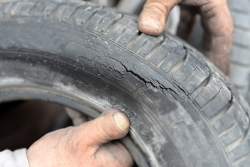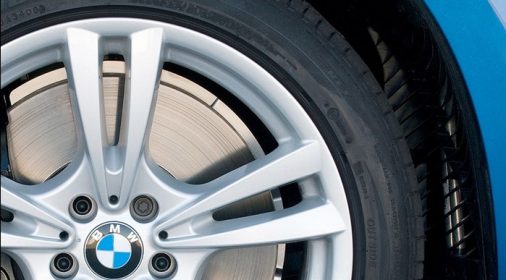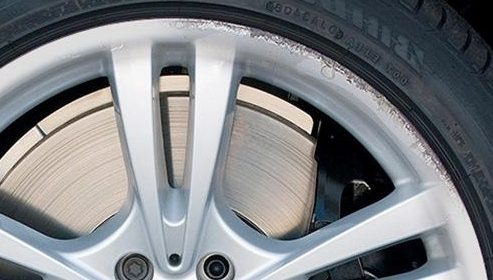Cracks in Tyres: Are They Dangerous
Regular tyre checks are essential in maintaining the condition of your car and are an important part of road safety. It’s important to check the tread depth and pressure as well as checking them over to make sure there are no cracks in the tyre.
What Causes Tyres to Crack?
The outer rubber wall of your tyre is constructed of polymers that are bound together to form molecules. So, cracks can form when the molecules break down. This can happen for a number of reasons including age, exposure to water, tyre pressure, degrading material and exposure to extreme temperature or UV rays.

Polymers within the tyre will expand when exposed to heat and then contract in the cold. The constant movement of this over time will weaken the different bonds and elements which can lead to a crack in the tyre. Water can also be the cause of small and large cracks.
Driving on wet roads for long periods can permeate the tyre even though the rubber is waterproof. Tyre pressure is a big factor that can lead to cracks if it is not correct. If your tyres are under or over pressurised it can cause cracks within the tyre. So it’s important to regularly check your tyre pressure.
How to Check Tyre Pressure
The best way to check your tyre pressure is by using a good-quality, accurate tyre pressure gauge. These can be found at most petrol stations and garages. Before you check your tyre pressure, you will first need to identify the correct pressure for your vehicle. This can be found online or in your owner handbook.
The RAC have put together a step-to-step guide on how to accurately check tyre pressure.
- Remove the valve caps from the tyre valve (keep these safe) and place the pressure gauge onto the tyre valve
- Gently press down the gauge on the valve stem to ensure you get an accurate reading
- Check the reading on the pressure gauge to determine if you’ll need to deflate or inflate your tyres
- If your tyres need inflating or deflating, set the pressure gauge to the correct pressure and place the gauge back onto the value
- The gauge will likely bleep to let you know the pressure is now at the set level
- Once correct, move on to the next tyre. Once all tyres are correct, refit the dust value caps
- Take regular measurements with the pressure gauge between inflating and deflating
Make sure you check all four tyres on your car, as the pressure in each tyre can vary significantly.
Are Cracks Normal?
Very small cracks that can be found on the tread blocks are usually just a normal sign of wear and tear. These cracks are not usually dangerous and do not require any attention. However, deeper and thicker cracks in the tyre may indicate a more serious issue. It could mean the tyre is ready to be replaced as it will begin to pose a variety of risks.
These risks include the tread separating from the rest of the tyre which is a serious problem. Small cracks are usually nothing to worry about, however, the larger cracks should be checked out. If you are unsure about the tyre crack, it’s a good idea to have it professionally checked by a specialist to ensure road safety.
Are Sidewall Cracks Safe?
The simple answer is no, sidewall cracks can be an indication of your tyre wearing out and ageing. The rubber may become stiff which could lead to a blowout at speed. Tyre blowouts can be extremely dangerous, not only for your safety but the safety of other road users. If you have had your tyres for around 5 years, you should seriously consider replacing them to avoid these dangerous blowouts.
Are Tyres with Lots of Tread Safe?
Not necessarily, it may be easy to overlook an issue with your tyre if there is lots of tread as it’s easy to presume the tyre is safe. However, this is not always the case. When deciding if your tyre needs to be replaced, you should always take into consideration how old the tyre is and the general overall condition of the tyre, not just the amount of tread it has.






